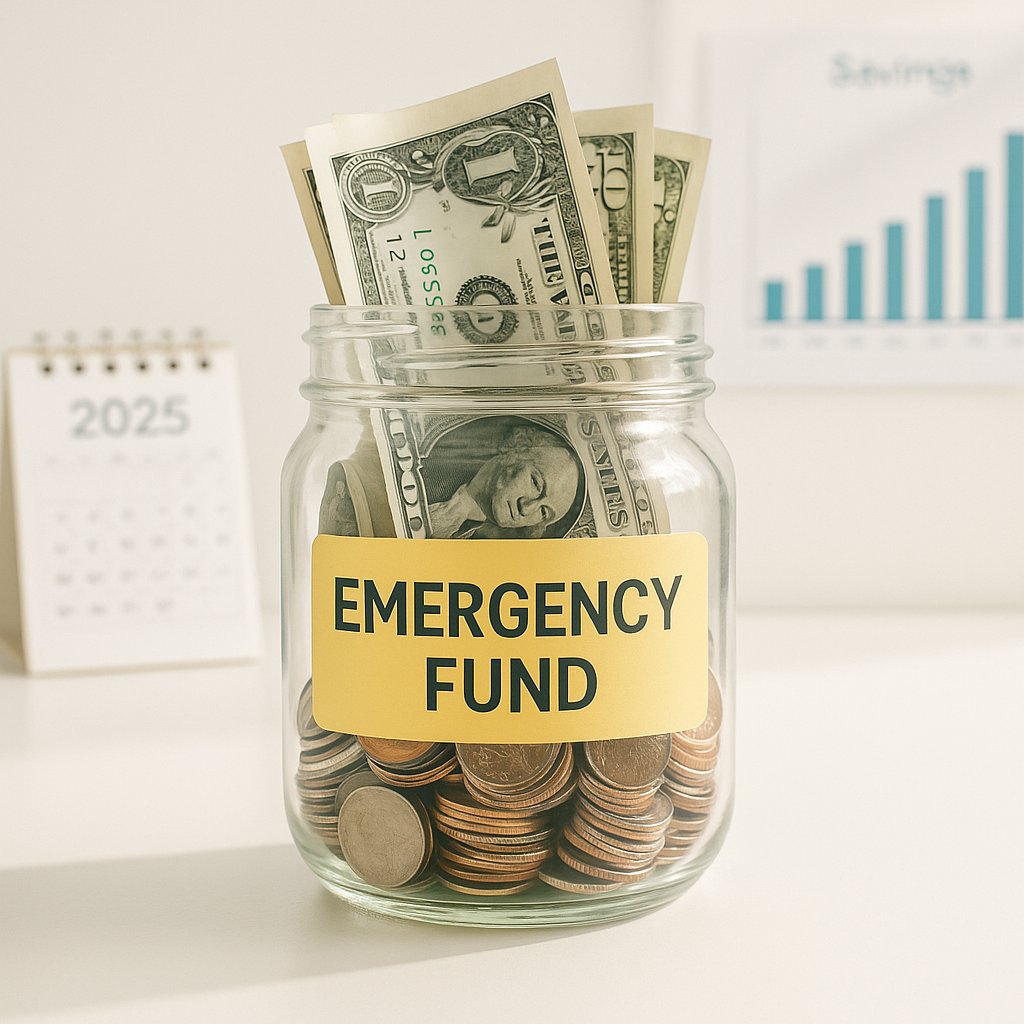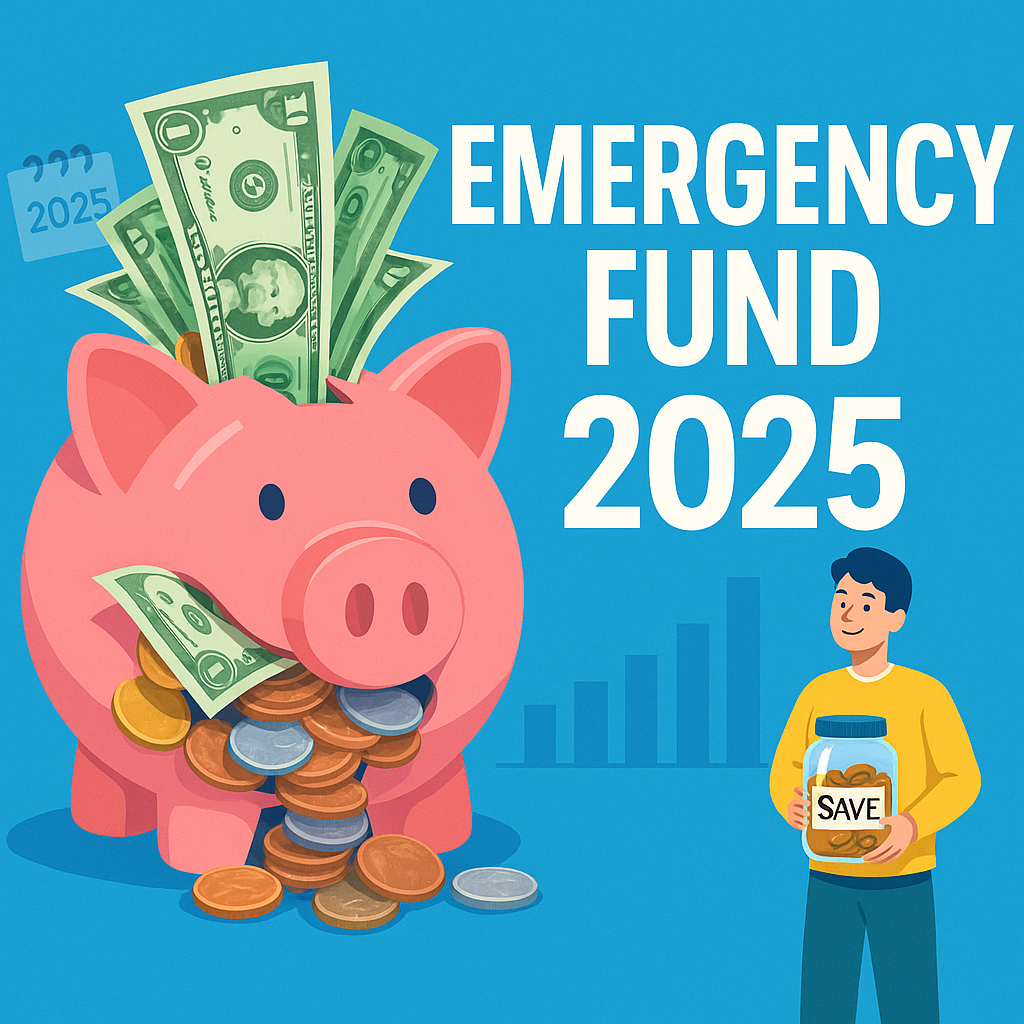Financial uncertainty can strike at any moment—a sudden car repair, a medical bill, or an unexpected job loss. In fact, recent studies show that over half of people lack enough savings to cover a $1,000 emergency. That’s where an emergency fund comes in. It’s your financial safety net, giving you peace of mind and stability when life throws curveballs. In 2025, with rising costs and unpredictable economic shifts, building an emergency fund is more crucial than ever. This blog post will guide you through practical, easy-to-follow strategies on how to build an emergency fund in 2025, tailored for anyone looking to take control of their finances.
Whether you’re starting from scratch or boosting existing savings, these tips will help you save smarter and faster. Let’s dive into why an emergency fund matters, how much you need, and the actionable steps to build one in 2025, focusing on how to build an emergency fund in 2025.
Why You Need an Emergency Fund in 2025
An emergency fund is money set aside for unexpected expenses, separate from your regular savings or investments. It’s not for planned purchases like a vacation or a new gadget—it’s for life’s surprises. In 2025, economic pressures like inflation and fluctuating job markets make this fund a must-have. Without it, you might rely on credit cards or loans, which can lead to debt and stress. A solid emergency fund offers greater financial security and peace of mind, especially when considering how to build an emergency fund in 2025.
- Financial Security: Covers urgent expenses without derailing your budget.
- Peace of Mind: Reduces anxiety about “what if” scenarios.
- Flexibility: Allows you to handle crises without borrowing or dipping into retirement savings.
How Much Should Your Emergency Fund Be?
The ideal emergency fund size depends on your lifestyle, income, and responsibilities. A common rule of thumb is to save 3–6 months’ worth of living expenses. Here’s a quick breakdown:
| Situation | Recommended Emergency Fund Size |
|---|---|
| Single, stable job, no dependents | 3 months of expenses |
| Dual-income household, stable jobs | 3–4 months of expenses |
| Single income, dependents, or variable income | 6 months of expenses |
| Freelancer or unstable job market | 6–12 months of expenses |
To calculate your target, add up essential monthly expenses like rent, utilities, groceries, and insurance. Multiply by the number of months that fits your situation. For example, if your monthly expenses are $2,000, aim for $6,000–$12,000.
Don’t panic if this feels overwhelming! Start small and build gradually. Even $500 can cover many minor emergencies, and you can grow from there.

7 Smart Strategies to Build Your Emergency Fund in 2025
Ready to start saving? These practical steps will help you build your emergency fund, no matter your income or starting point.
1. Set a Clear Savings Goal
Define a specific, realistic target to stay motivated. Break it into milestones, like $500, $1,000, or one month’s expenses. Write down your goal and track progress monthly. A clear target makes saving feel achievable and keeps you focused.
2. Open a Dedicated Savings Account
Keep your emergency fund separate from your checking or regular savings account to avoid dipping into it. Look for a high-yield savings account with competitive interest rates to grow your money faster. Many online banks offer rates above 4% in 2025, compared to traditional banks’ 0.5%. Ensure the account is easily accessible but not linked to your daily spending.
3. Automate Your Savings
Automation is a game-changer. Set up a recurring transfer from your checking account to your emergency fund right after payday. Even $25 per paycheck adds up to $600 a year. Treating savings like a bill ensures consistency and removes the temptation to skip contributions.
4. Cut Non-Essential Expenses
Review your spending to find areas to trim. Cancel unused subscriptions, reduce dining out, or switch to a cheaper phone plan. Redirect the savings to your emergency fund. For example, cutting $50 a month from takeout can add $600 annually to your fund. Use budgeting apps to track spending and identify leaks.
5. Boost Your Income
Increasing your income accelerates your savings. Consider side hustles like freelancing, tutoring, or selling unused items online. In 2025, gig platforms and remote work opportunities are abundant. Dedicate all extra earnings to your emergency fund for faster progress.
6. Save Windfalls and Bonuses
Tax refunds, work bonuses, or cash gifts are perfect opportunities to supercharge your fund. Instead of splurging, commit at least 50% of any windfall to your emergency fund. A $1,000 tax refund could instantly cover a small emergency or bring you closer to your goal.
7. Start Small and Stay Consistent
If money is tight, begin with $10 a week. Consistency matters more than the amount. Over time, small contributions add up, and as your financial situation improves, you can increase your savings rate. Celebrate milestones to stay motivated, like treating yourself to a coffee when you hit $500.
Common Mistakes to Avoid
Building an emergency fund is straightforward, but pitfalls can slow you down. Watch out for these:
- Not Prioritizing Savings: Waiting until “extra” money appears rarely works. Treat your fund as a non-negotiable expense.
- Using the Fund for Non-Emergencies: Avoid tapping it for impulse buys or planned expenses. Define what counts as an emergency (e.g., medical bills, car repairs).
- Keeping It Too Accessible: Storing your fund in a checking account risks accidental spending. Use a separate savings account with limited access.
- Giving Up Too Soon: Saving takes time. If progress feels slow, focus on small wins and adjust your strategy as needed.
Tools and Resources to Help You Save
In 2025, technology makes saving easier. Here are some tools to support your emergency fund journey:
| Tool Type | Examples | How It Helps |
|---|---|---|
| Budgeting Apps | YNAB, Mint | Tracks spending and highlights savings opportunities |
| High-Yield Savings Accounts | Online banks, credit unions | Earns higher interest to grow your fund faster |
| Side Hustle Platforms | Upwork, Fiverr, eBay | Connects you to extra income sources |
| Savings Trackers | Spreadsheets, goal-tracking apps | Monitors progress and keeps you motivated |
Take the First Step Today
Building an emergency fund in 2025 is one of the smartest financial moves you can make. It’s not just about money—it’s about gaining control, reducing stress, and preparing for the unexpected. Start with a small, achievable goal, automate your savings, and use the strategies above to stay on track. Even a modest fund can make a big difference when life surprises you.
Call to Action: Calculate your emergency fund target now. Add up your monthly expenses, pick a 3–6 month goal, and commit to saving $10 this week. Open a high-yield savings account and set up a $25 monthly transfer. Your future self will thank you!

